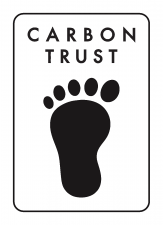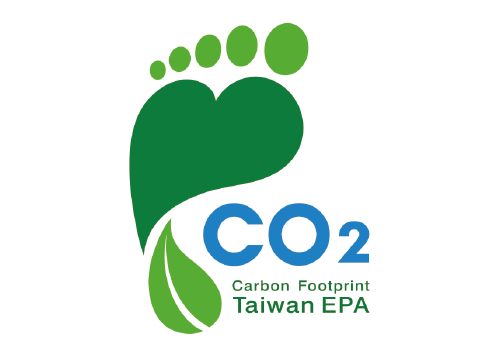What Is Carbon Emission Label?
The term "carbon emission label" refers to the calculation of direct or indirect greenhouse gas emissions generated throughout the entire life cycle of a product, including raw material acquisition, manufacturing, processing, transportation, distribution, consumer use, and end-of-life disposal. This label, also known as "carbon label" or "carbon footprint label", quantifies the environmental impact and is affixed to the product.
The Development of Carbon Emission Label
 |
The evolution of the carbon emission label began in 2001, with the concept emerging as a tangible symbol derived from the carbon footprint. The Carbon Trust, established by the UK government, introduced the world's first global carbon footprint label in 2007, aiming to heighten local manufacturers' awareness of global warming. The term "carbon footprint" encompasses the entirety of an activity or product life cycle. The existence of the carbon footprint label aims to display the product's carbon dioxide emissions (g) directly on the product, allowing consumers to make informed choices based on lower carbon footprint options. As of now, there is no globally unified product carbon footprint label; it has been introduced in various countries, including the UK, Taiwan, France, South Korea, Canada, Japan, and North America. |
International regulations related to carbon emission labels include ISO 14067 for product carbon footprints and PAS 2050 for greenhouse gas emissions assessment of goods and services throughout their life cycle. The differences lie in the organizing bodies and the scope of carbon footprint calculations:
- ISO 14067 for product carbon footprints is developed by the International Organization for Standardization (ISO), while PAS 2050 for goods and services life cycle greenhouse gas emissions assessment is jointly published by the British Standards Institution (BSI), Carbon Trust, and the UK Department for Environment, Food & Rural Affairs.
- ISO 14067's carbon emission calculation encompasses the entire process from raw material production, manufacturing, transportation to sales, use, and recycling, providing a comprehensive and extensive scope. On the other hand, PAS 2050 focuses only on the process from raw material acquisition to production completion, excluding processes like transportation, consumer use, and recycling.
“Cool” the Earth—The Carbon Emission Label in Taiwan
 |
Taiwan introduced the Carbon Emission Label system in 2010, aiming to enhance the competitiveness of low-carbon products in domestic and international markets. The meaning of the Taiwan Carbon Emission Label includes:
|
|
In addition to encouraging manufacturers to assess product carbon emissions and apply for carbon footprint labels, Taiwan's Ministry of Environment introduced the "Reduction Carbon Footprint Label," requiring certified manufacturers to reduce their product's carbon footprint by 3% or more within the label's validity period. Once the requirement is met and verified by the ministry, the product receives the reduction carbon label. Products with this label are referred to as "green products," giving them priority in green procurement and consumer choices. The meaning of the reduction carbon label includes:
|
The Example of Applying for a Carbon Emission Label
The Layana tableware brand "Layana Cutlery," established in 2003, utilizes core technologies such as sheet metal stamping and insert molding to design environmentally friendly utensils suitable for Eastern use. The carbon emission labels for Layana Cutlery's products, specifically the spoon and chopsticks obtained in 2017 and 2021, provide transparent information for consumers to choose low-carbon products. In 2019, Layana' factory received ISO 50001 Energy Management System certification, thoroughly examining the factory's electricity usage. In 2022, the factory underwent the Cleaner Production Assessment System, implementing changes for energy conservation and carbon reduction.
Layana, centered around the reusable cutlery brand, adheres to ESG principles and strives to transform into a manufacturer of low-carbon products that are most sustainable for the environment and do not impact human health. Short, medium, and long-term goals are set as follows.
- Short-term goal: Continuously increase the number of products with carbon footprint labels and provide consumers with more information on product carbon emissions, such as dual-section chopsticks.
- Medium-term goal: Reduce unnecessary use of raw materials and switch to environmentally friendly materials to further reduce carbon emissions, for example, precious chopsticks.
- Long-term goal: Achieve carbon neutrality for products and offset the original carbon emissions in an appropriate manner.
Future Trends of Carbon Emssion Labels
Since the signing of the Paris Agreement by 197 countries in 2015, aiming to achieve net-zero carbon emissions by 2050, the European Union has prepared in advance with the Carbon Border Adjustment Mechanism (CBAM). This mechanism requires global traders exporting to EU countries to declare product carbon emissions and purchase "CBAM certificates." The concept of inspecting carbon emissions has evolved from a regional focus to trade agreements between nations and continents.
Conclusion
Since the introduction of the carbon footprint in the 1990s, the tangible labeling of carbon footprints has encouraged manufacturers to independently assess product carbon emissions. The calculation of carbon footprints has evolved to inspecting the carbon emissions of organizations and enterprises. If every company, product, and individual can be aware of and actively reduce their carbon footprint, the Earth can respond favorably to humanity and all living beings. After all, our actions today will determine the fate of the future. How about you? What kind of future do you want to leave for yourself and your loved ones..?